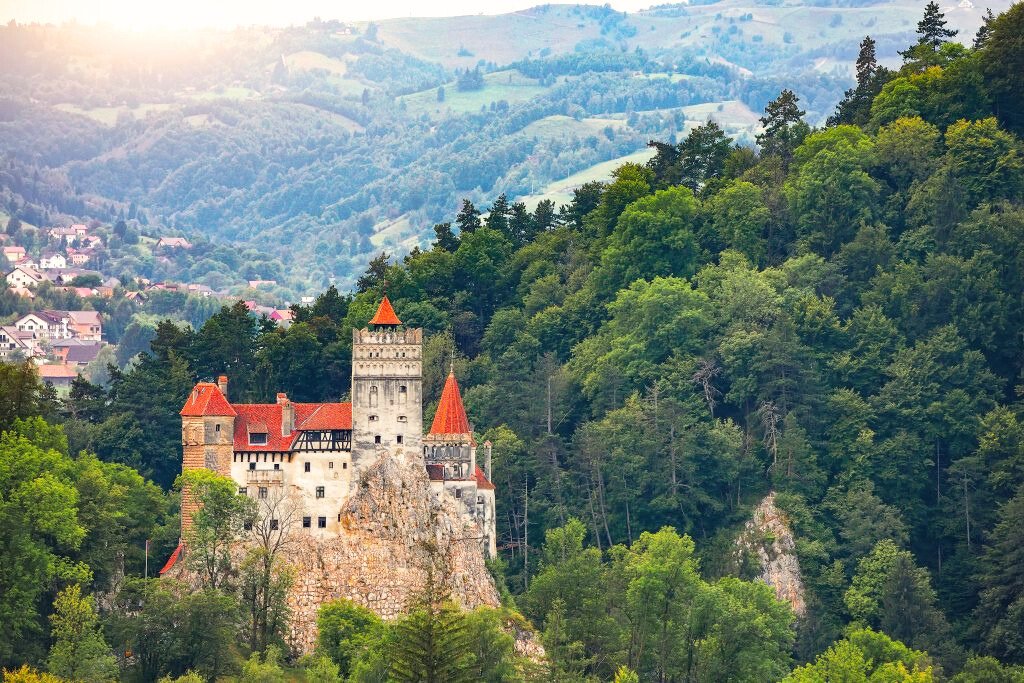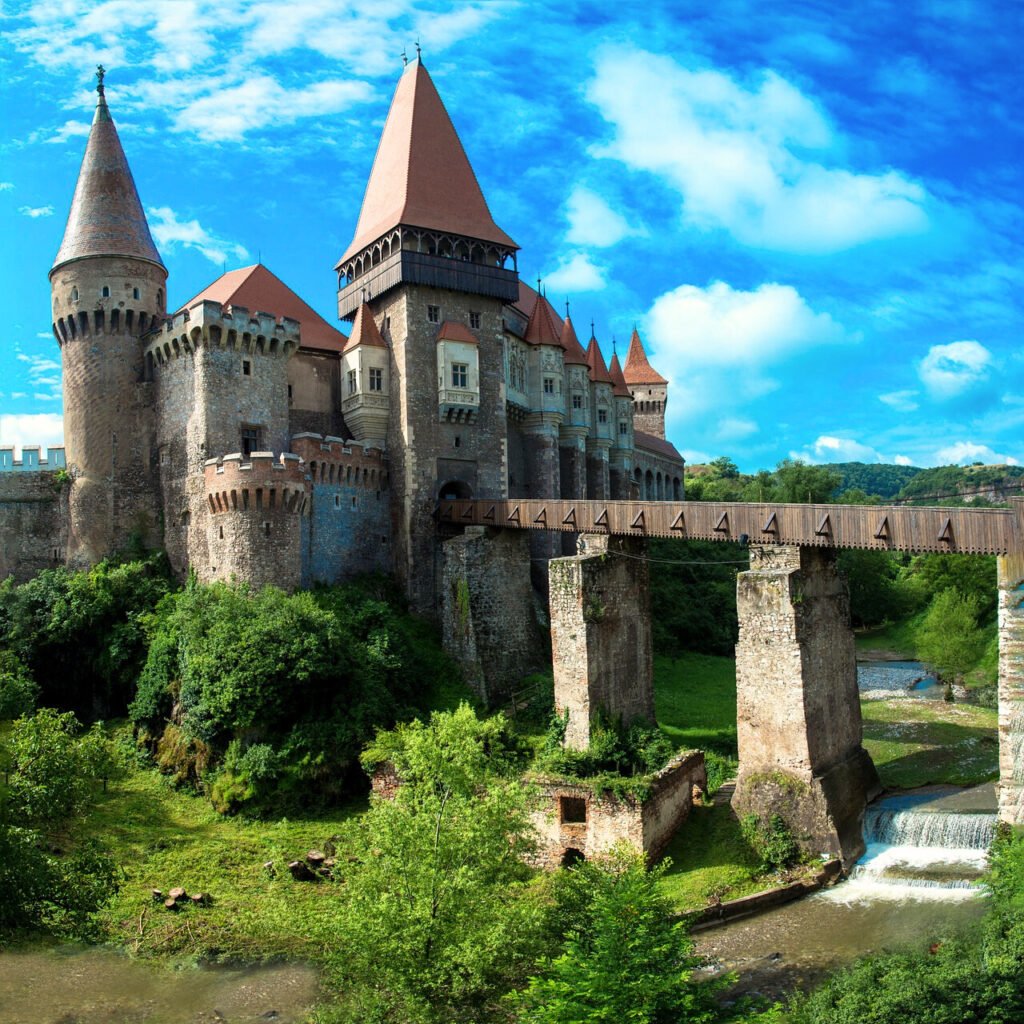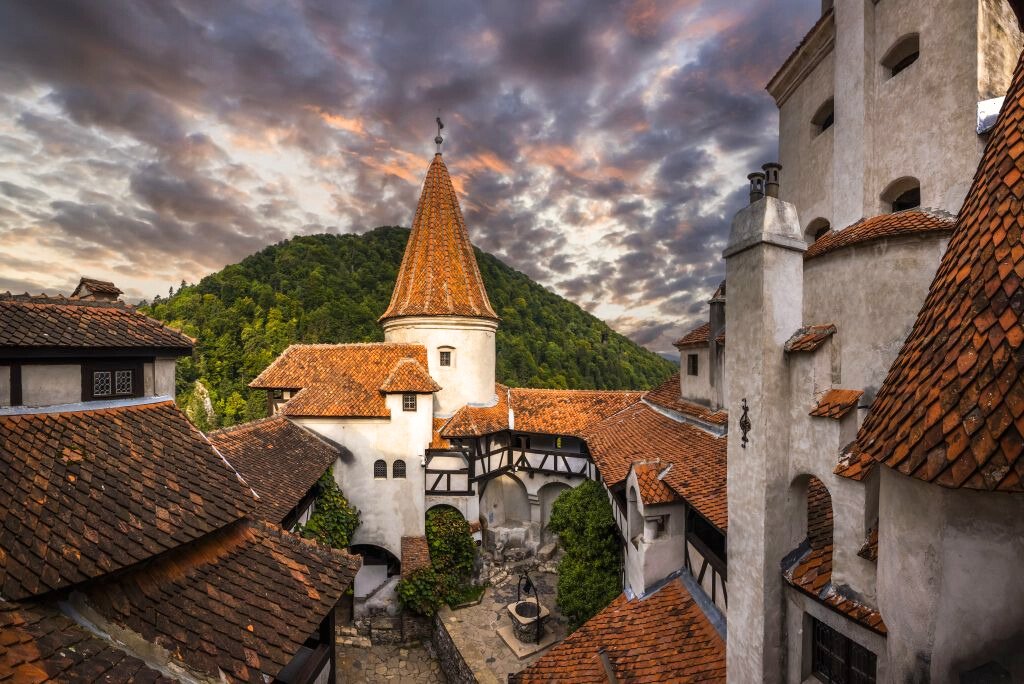When people think of Dracula, they often conjure images of a sinister vampire dwelling in a forbidding castle in the Carpathian Mountains. In Romania, this vision is embodied by Bran Castle, a majestic medieval fortress widely associated with the fictional Count Dracula.
Every year, the castle attracts countless tourists eager to delve into the legend of the world’s most famous vampire. But how much truth is there behind this connection? The story of Bran Castle and its relationship to Dracula may not be what you expect.

The Real History of Bran Castle
Dracula’s Bran Castle, located near the town of Bran in the Transylvania region, was constructed in 1377. Initially built as a fortress to defend against invading Ottoman forces, it evolved into a royal residence and customs post. Today, it is a national monument and museum, preserving centuries of Romanian history and culture.
Although it’s often referred to as “Dracula’s Castle,” there is no historical proof that Vlad the Impaler, the 15th-century ruler associated with the Dracula legend, ever resided there. Vlad, whose reputation for cruelty made him notorious, had connections to Transylvania, but his primary residence was Poenari Castle, far from Bran. Thus, the real-life historical link between Vlad and Bran Castle is tenuous at best.

The Dracula Myth and Bram Stoker’s Influence
The association between Bran Castle and Dracula originated not from history but from literature. In 1897, Irish author Bram Stoker published his famous Gothic novel Dracula, where the eponymous count lived in a dark, remote castle somewhere in Transylvania. While Stoker never visited Romania, his vivid descriptions of Dracula’s lair bear a faint resemblance to Bran Castle, especially its foreboding location in the mountains and medieval architecture. Over time, Bran Castle became cemented in the popular imagination as Dracula’s Castle, a status solidified by the rise of tourism in Romania.
Much of the confusion stems from the novel’s geographical setting. Stoker’s portrayal of a mysterious Transylvanian castle in a remote mountain range matches the dramatic features of Bran Castle despite there being no direct link between the two. As the Dracula myth grew in popularity, so did the association with Bran Castle, making it a prime destination for fans of the novel and the vampire lore.

Vlad the Impaler: The Historical Figure Behind Dracula
The figure who inspired Stoker’s Dracula, Vlad III, also known as Vlad Dracula or Vlad the Impaler, was a real-life ruler of Wallachia in the 15th century. His brutal reign, marked by his favored method of punishing enemies through impalement on wooden stakes, earned him his fearsome reputation. While considered a national hero in Romania for defending his land against Ottoman incursions, Vlad’s cruelty also fed into the mythology surrounding him.
Vlad’s nickname, “Dracula,” comes from the Romanian word “dracul,” meaning “dragon” or “devil,” a title inherited from his father, Vlad Dracul. This association with the supernatural helped fuel his connection to the Dracula legend. However, despite the intrigue surrounding his life, there is no concrete evidence that Vlad the Impaler had any significant connection to Bran Castle. While he may have passed through the region or been briefly imprisoned nearby, Bran Castle was not a key location in his life.
Bran Castle Today: A Tourist Attraction
Bran Castle has become synonymous with the Dracula legend despite the historical inaccuracies, drawing in visitors worldwide. Today, the castle is a museum offering exhibits on medieval life in Transylvania, its architecture, and its long history as a royal residence. Although the Dracula myth brings many tourists to Bran, the museum focuses more on the castle’s natural history and the context of Romania’s medieval past.
That being said, visitors are often enchanted by the mystical atmosphere that surrounds Bran Castle. Set against the backdrop of the Carpathian Mountains, it evokes the feeling of stepping into a Gothic tale. The region is steeped in folklore and superstitions, with stories of spirits, ghosts, and other mysterious creatures that long predate the Dracula myth, adding to its allure.

The Legacy of Bran Castle
While Bran Castle is a fascinating historical monument, its link to Dracula is more fiction than fact. Vlad the Impaler, the real-life figure behind Bram Stoker’s Dracula, had little connection to the castle. Stoker likely never knew about it when crafting his iconic story. Nevertheless, Bran Castle’s striking appearance and strategic location have made it a powerful symbol of the Dracula legend, blurring fact and fantasy.
Whether drawn by its medieval architecture, rich history, or association with one of the most famous characters in literary history, visitors to Bran Castle will find an experience where history and myth intertwine. Bran Castle offers more than a glimpse into Romania’s history; it illustrates how myths and legends influence our perception of real-world places.
In the end, Bran Castle is both a testament to Romania’s history and a beacon of the enduring power of storytelling, reminding us that sometimes, the legend can be just as captivating as the truth.
Plan your next trip to Transylvania and find the best accommodation for an unforgettable experience.










